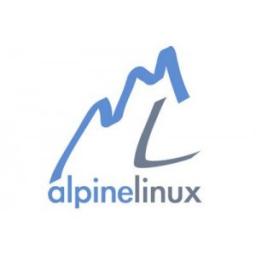Everyone knows opinions are like noses: everyone has one. But Bruce Byfield has been at it longer than most, and his opinion often reflects the industry. And he loves KDE5.
At a time when the Linux desktop offers six main alternatives (Cinnamon, GNOME, KDE Plasma, LXDE, Mate, Unity and Xfce), KDE Plasma consistently tops reader polls with an average of 35-40 percent. In such a diverse market, these figures indicate a broad appeal that other Linux desktop alternatives can't match.
I believe that one of the main reasons for this appeal is the KDE design philosophy. GNOME and Unity may offer a more aesthetic-looking default, but only at the cost of simplifying both the desktop and the utilities in the name of reducing clutter.
By contrast, KDE goes to the opposite extreme. KDE applications typically include every function you can imagine. Sometimes, they can take a version or two to organize the menus in a meaningful way, but applications like Amarok, K3B, or digiKam go far beyond the most common use cases. When you run into problems with them, they usually offer solutions.
Read the rest of his thoughtful and insightful review here.
[Ed. note: Actually, opinions are like something else. But Pipedot is a family-friendly site.]
Yes, Android is based on the Linux kernel, but until the Linux and Android platforms and application ecosystems have been separate things.
MicroXwin hopes to change that with a new Linux distro called VolksPC that runs both Debian and Android apps in fully native mode.
"We created a unified distribution that allows both Android and Debian LXDE/XFCE applications to run simultaneously at native speeds. On ARM, our distribution is based on a modified ARMHF Debian Wheezy rootfs", the developers write. As Phoronix reports, the developers claim that apps under both environments run "at native speeds"; the only changes to Android are in startup scripts, providing full compatibility with existing applications; and MicroXwin provides a high-speed X-Windows framework for the system.
The distro hopes to provide the best of both worlds, and a Linux desktop environment with full support for the entire Debian app repository while providing Android's simplicity and ease of use where things like HD video are concerned.
 This week's Friday distro is Alpine Linux
This week's Friday distro is Alpine Linux, a surprisingly interesting distro specialized for Routers, VPNs, VOIP service, and firewalls that takes an aggressive, proactive approach to security. It's therefore minimalist, so you can install it on a router, and includes the absolute minimum (no Perl, for example). It began life as a branch of the
LEAF project, which wanted a router/vpn system that could be booted from a floppy disk and run from memory: the Alpine hackers decided that config was a bit
too minimal and chose instead a slightly larger package set that also provided squid, samba, dansguardian, and some other heavier applications. I thought for sure I'd learn it was developed by a bunch of Swiss or Austrian hackers, but no: it simply stands for "A Linux Powered Integrated Network Engine."
Distrowatch reports it comes originally from Norway.
Most interesting of all, Alpine incorporates two security enhancements I haven't yet found on any other distro:
PaX and
Buffer Overflow Protection (Stack Smashing Protection). PaX is a Linux kernel patch that implements least privilege protection for memory pages. It flags data memory as non-executable, program memory as non-writable and randomly arranges the program memory. Inclusion of these two systems kept Alpine Linux protected from the vmsplice 0-day Linux kernel vulnerability: even though the attack would crash the OS, there would be no system compromise.
If you're interested in trying it, it's easy: you can run it from a USB stick, back up your config to a single file, and its simple package management and init systems make it possible to be up and running in under 10 minutes.
 KDE 5 has been released
KDE 5 has been released. Er, that's the
KDE 5 Plasma Desktop since the folks at KDE are now very particular about making sure you call it Plasma. But nomenclature isn't important; what's important is what this latest evolution of the desktop brings to the user, and in my opinion it's quite a lot. Plus, two big things: First, unlike the transition from KDE3 -> KDE4, which broke everything, the transition from KDE4 -> KDE5 should be automatic. Secondly, this article points out everything has gotten
faster, which makes clear a lot of energy has gone into optimizing underneath the hood. Sounds good!
- Converged Shell: means the same components can be used to design a desktop or tablet interface or phone interface. It lays the groundwork for a device that adapts its interface to whatever you're holding, like the Asus Padphone [ed. note: which is pretty damned cool!]
- Modernized launchers: 3 of them, including one called Kicker (for you KDE3 nostalgics like me)
- Improved notification area: leads to fewer distractions, apparently
- Better support for high DPI displays
In the words of Steven J. Vaughan-Nichols
1:
When KDE made a radical change to its popular Linux desktop in 2008 in KDE 4, I hated it. Over a year and many changes later, I finally found KDE 4.3 usable. This time, with the just-released KDE Plasma 5, I didn't have to wait for it to be usable. The new KDE is already good to go.
1Get a nickname, dude! SJVN is too much to type!

I got the idea when writing up
that article about Distrowatch: they cover so many distros and so many of them are so obscure; I decided to check some of them out. Conveniently - as though they're tempting me - there's a "Random Distribution" button on the front page of Distrowatch, which makes it easy. Every Friday I propose a roll of the dice, and a quick look at some distro you've probably never heard of. I'll try to give equal coverage to the BSDs too.
If this is annoying or not interesting to you, quick! Flame me to a cinder in the comments. Otherwise, enjoy what will hopefully be a weekly feature that will lead to interesting commentary and comparison. I'll be skipping the big guys (RedHat, openSUSE, Ubuntu, etc.) since the purpose is to give some exposure to the obscure/niche stuff. These aren't reviews since I don't have time to install and try each one.
Today's distro is GALPon MiniNo, which gets my vote for the "least memorable name for a distro, ever." But it can be explained: GALPon is the
Linux User's Group of Pontevedra, Spain, in the region of Galicia. And they're actively working to get Linux in schools, especially where equipment is old or low-powered and often recycled. No surprise then that GALPon MiniNo emphasizes low system requirements: it installs on machines with 128M of RAM and 4GB hard drives, and uses IceWM or Openbox, RoxFiler, and the like to stay light. It also supports Galician and Catalan - regional languages of Spain - out of the box. Looks like it will install nicely on a netbook or liveCD.
I'm a big fan of lightweight distros to counter the otherwise endless bloat of the big guns. I might have to try this one out and give Puppy a run for its money. Read more (in Spanish) at
their homepage,
their help and documentation (also Spanish/Galician), or
their Google group forum.
Lennart is at it again, this time
changing how /etc and /var are populated in a systemd system. In Linux, remember, system-wide configuration data (computer name, startup scripts, and such) are stored under the /etc directory, while all variable state data (caches, mail spools, and such) are stored under the /var directory. Both of these directories have traditionally been preserved across reboots.
With these changes one can perform a "factory reset" by simply removing these two directories and letting the system reconfigure itself with defaults or by dynamic means, such as DHCP. This idea isn't exactly new, as UNIX admins have been doing similar feats for network booting,
live disks , and
security conscious systems for many years. Still, though, by building it into systemd, wiping the installation to a clean state and maintaining a "stateless" system by default could get a lot easier in future distributions.

Like KDE? Looking for something new and innovative? Have a look at KaOS. As described on its home page, KaOS is "A lean KDE Distribution", and it gives these as the ideas and principles behind the distribution:
- Rolling distribution
- Built from scratch (not derived from some 'larger' distribution)
- KDE desktop / Qt toolkit only
- x86_64 architecture only
Interesting to have a distro that's not just a remash of some version of Ubuntu, and the narrow focus of the distro means there are fewer moving parts to worry about. I'll be giving it a look over the weekend.
Here is KaOS' page on Distrowatch. But J.A. Watson over at ZDNet
does a pretty reasonable job of reviewing it this week, too.
Get ready to start your updating tool: a serious vulnerability in the Linux kernel has
just been identified. Threatpost describes it:
The bug appears to be a memory corruption vulnerability that could be exploited to execute code. The National Vulnerability Database describes it as follows: "The n_tty_write function in drivers/tty/n_tty.c in the Linux kernel through 3.14.3 does not properly manage tty driver access in the "LECHO & !OPOST" case, which allows local users to cause a denial of service (memory corruption and system crash) or gain privileges by triggering a race condition involving read and write operations with long strings."
Happily, this being Linux, the vulnerability has been
fixed. No word if Android and other projects that use the Linux kernel are also affected. To be safe, stay in your basement with the lights out and your modem/router and all phones turned off, unplugged, and buried in a pot of marmalade.






